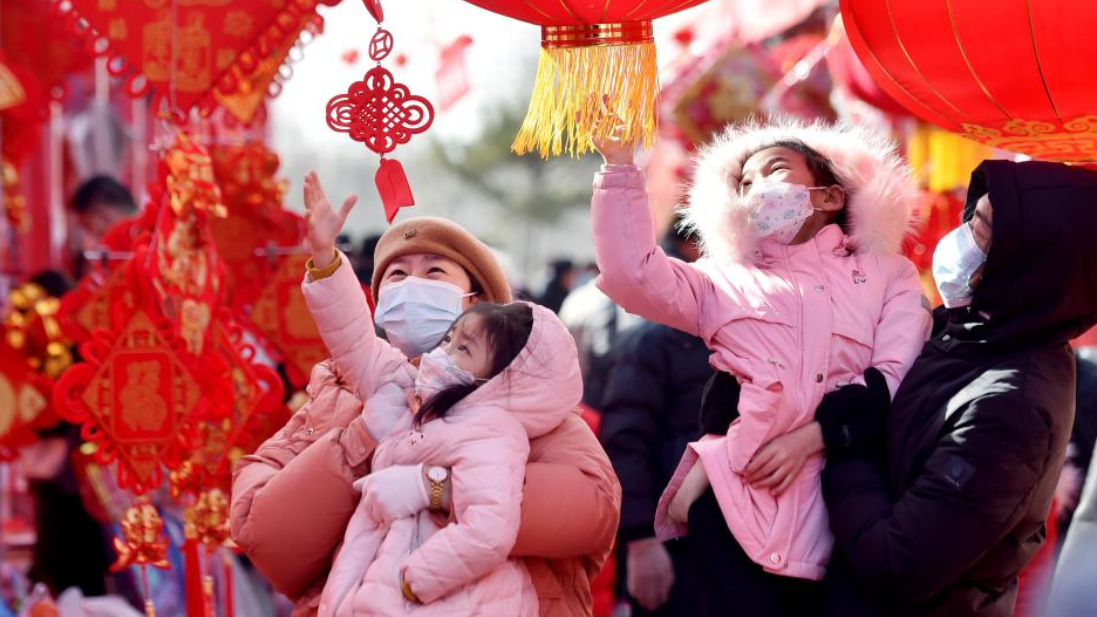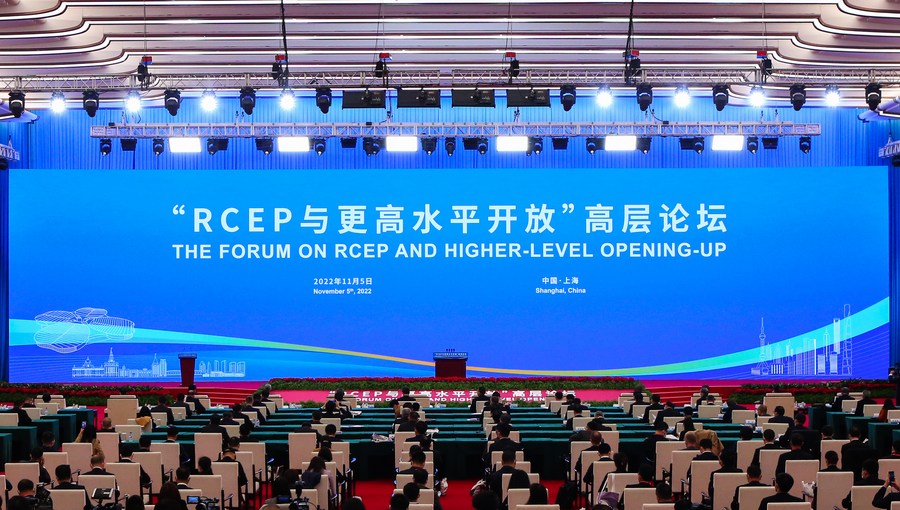
People select new year decorations at a market in Zhengding County of Shijiazhuang, north China's Hebei Province, Jan 18, 2023. /Xinhua
People select new year decorations at a market in Zhengding County of Shijiazhuang, north China's Hebei Province, Jan 18, 2023. /Xinhua
Editor's note: Qiao Xue is a professor of the School of Economics at Renmin University of China. Zhang Zhongyuan is a PhD candidate in Economics at Renmin University of China. The article reflects the authors' views and not necessarily those of CGTN.
As the world economy recovers from the COVID-19 pandemic, several ongoing events have complicated the situation: The quantitative-tightening policy implemented by the U.S. Federal Reserve, combined with the interest rate hikes, aiming to restore domestic price stability in the U.S., has made the international financial market more volatile; the rising interest rates impose negative spillover impacts on emerging countries and developing countries, by exposing them to sovereign debt crisis and financial risks; together with the aftermath of the COVID-19 pandemic and the unsettled geopolitical conflicts, the security of the global value chains suffer from disruptions and face rising risks.
China's "dynamic zero-COVID" policy has been relaxed substantially since December of 2022. Starting from January 8, 2023, COVID-19 has been managed as a Class B infectious diseases and border control measures were adjusted.
Following these policies, the number of cross-border travelers have increased at an orderly pace. About 490,000 international trips made daily during the first five days since January 8, 2023, nearly a 50 percent increase compared with the period right before the Class B infectious disease policy, and 26.2 percent compared with the same period in 2019.
A notable highlight was the move of the local governments organizing their exporting industries going overseas to explore potential clients and secure orders. The Commerce Department of Zhejiang Province organized trips to Europe, Japan and the United Arab Emirates with a team of exporting firms to explore business opportunities in international market; Suzhou, an export powerhouse in East China's Jiangsu province, encouraged local firms to visit more than 200 Japanese companies and sealed more than 1 billion yuan ($145.4 million) worth of deals.
Furthermore, foreign investors start to rebuild their confidence in China and bought a net $12.6 billion of stocks and bonds in the first half of January 2023, compared with $15.7 billion in December 2022, according to the State Administration of Foreign Exchange (SAFE).
China has always made the security of people's health and lives as the top priority. The previous COVID-19 policy could achieve a low mortality rate and the least economic disruption. Against the staggering shocks in the contemporary world, China continues to be a steady force for global trade and economic growth.
In 2022, China's total goods trade grew by 7.7 percent on a year-on-year basis according to the General Administration of Customs (GAC). China's exports account for 14.7 percent of the global export market, leading the world for 14 consecutive years. The country's trade with Belt and Road countries climbed 19.4 percent to account for 32.9 percent of its total foreign trade, while trade with other members of the Regional Comprehensive Economic Partnership (RCEP) rose 7.5 percent.

The Forum on the Regional Comprehensive Economic Partnership (RCEP) and Higher-level Opening-up is held in Shanghai, east China, November 5, 2022. /Xinhua
The Forum on the Regional Comprehensive Economic Partnership (RCEP) and Higher-level Opening-up is held in Shanghai, east China, November 5, 2022. /Xinhua
China's new development paradigm of "dual circulation" allows the domestic and global market to reinforce each other, with the domestic market as the mainstay. In order for the domestic market to function well, strengthening international division of labor and global cooperation is a prerequisite. China will commit to engage more with the international division of labor, maintain a stable global industrial chain, and promote high standard opening-up.
In his speech at the 2023 World Economic Forum Annual Meeting in Davos, Chinese Vice Premier Liu He reaffirmed that "We oppose unilateralism and protectionism, and look forward to strengthening international cooperation with all countries for world economic stability and development, and the promotion of economic re-globalization."
With the optimization of its COVID-19 policy, China's domestic industrial and supply chains will restore back to their normal level. The Chinese economy will recover, although the process inevitably faces numerous challenges. The latest forecast data from major international organizations and institutions show that China will achieve a great rebound in economic growth.
The World Bank forecasts China will achieve 4.3 percent in economic growth, while global growth is projected to slow to 1.7 percent in 2023. Given that China is an essential part of the world economy, its recovery, together with the contribution of its well-functioning industrial and supply chain, will be an indispensable force for the world economy to rebound.
(If you want to contribute and have specific expertise, please contact us at opinions@cgtn.com. Follow @thouse_opinions on Twitter to discover the latest commentaries in the CGTN Opinion Section.)